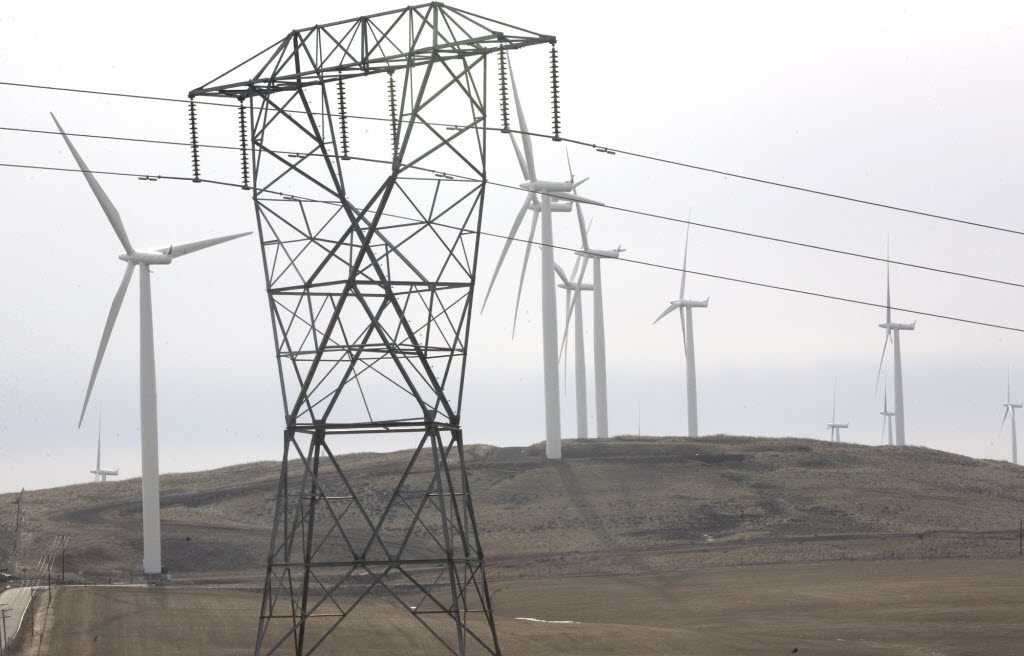When BPA officials last month announced their decision to eliminate the Grey Line from consideration, they cited impact to private homes as one reason. The agency said the citizen-proposed line would still land within 500 feet of more than 200 homes.
Advocacy groups supporting the line have since disputed that number, saying it erroneously includes homes in Camas, where BPA’s four proposed options cross the Columbia River. In a newsletter released later in January, proponents of the Grey Line said their intent was for the line to cross between Camas and Washougal, or another location that doesn’t affect residents in the area.
— Eric Florip
You might call small-scale timberland owners and tree farmers a reserved bunch, seldom seeking attention. That’s their nature, according to Rick Dunning.
“We’ve always been the quiet, silent type of folks,” said Dunning, executive director of the Washington Farm Forestry Association.
When BPA officials last month announced their decision to eliminate the Grey Line from consideration, they cited impact to private homes as one reason. The agency said the citizen-proposed line would still land within 500 feet of more than 200 homes.
Advocacy groups supporting the line have since disputed that number, saying it erroneously includes homes in Camas, where BPA's four proposed options cross the Columbia River. In a newsletter released later in January, proponents of the Grey Line said their intent was for the line to cross between Camas and Washougal, or another location that doesn't affect residents in the area.
-- Eric Florip
But in the debate over where to put a high-powered transmission line through Clark and Cowlitz counties, Southwest Washington’s timber interests have quietly made their voices heard. Input has come from both the relatively small operations, many represented by Dunning’s farm forestry association, and well-known giants such as Weyerhaeuser. Players of all sizes fear the new power line — and the 150-foot utility towers carrying it — could cut through some of the region’s valuable timber holdings.
“Wherever you put the line is going to impact some of our members,” Dunning said. “Somebody is going to be impacted.”
The Bonneville Power Administration first proposed building the 500-kilovolt transmission line more than two years ago, aiming to boost capacity on a strained Northwest power grid. Planners have laid out four possible routes for the line between Castle Rock and Troutdale, Ore., along with several variations from them. The line would cost an estimated $317 million to $407 million.
Controversy has followed the project nearly every step of the way, but the most vocal outcry has come from several citizen groups pointing to health and property concerns. Many supported a citizen-proposed route that would have pushed the line farther north and east than any of BPA’s four main options. But the federal power marketing agency announced last month it had dropped the so-called Grey Line from consideration. Officials said it was too costly, and would have shifted the line’s footprint to new landowners not aware of the project, delaying the planning process.
For timber companies, a new transmission line could carve through a significant swath of valuable land in Clark and Cowlitz counties, industry officials said. Among the most impacted may be Weyerhaeuser — one of the proposed routes stretches across as much as 30 miles of its land, according to BPA. Longview Timber LLC and Sierra Pacific Industries also stand to lose timberland of their own.
Weyerhaeuser spokesman Anthony Chavez said the company’s Southwest Washington holdings are valuable because of their quality and proximity to a Weyerhaeuser mill complex in Longview. The region also helps feed timber export markets across the Pacific, Chavez said.
In a letter sent to BPA last fall, Weyerhaeuser President and CEO Dan Fulton said his company is troubled by the possible loss of productive timberland and in
creased energy costs from building a new line.
“The only viable transmission route Weyerhaeuser can support is expansion of the existing right-of-way,” Fulton wrote.
That would be BPA’s west route into the Vancouver urban area. That’s also directly at odds with some of the most vocal citizen groups who have pushed for an “unpopulated” route to the north and east. Other residents have taken the opposite stance, arguing the project shouldn’t cut new right of way through rural, private land.
“It’s a challenge to balance,” BPA project manager Mark Korsness said. “One reason we don’t have a preferred (route) yet is because it’s so tough to consider all the impacts.”
The Washington State Farm Forestry Association sent a letter of its own last year, outlining 21 points for BPA to consider from the perspective of small timber farms and other landowners. But the group stopped short of taking a specific stance. With such varied interests among its hundreds of members — including some 250 families in Clark County — the association tried to represent all its voices, Dunning said.
Once planners settle on a route, BPA will look for ways to minimize the effect on timberland and other properties, Korsness said. Tower and access road locations will be evaluated. Any landowner directly impacted by the project will also receive financial compensation, said BPA spokesman Doug Johnson.
BPA is expected to release a draft environmental impact statement on the project this spring. The agency has also made it a “high priority” to pick a preferred option, Korsness said.
Wherever the line lands, it’s clear not everyone will be pleased with the outcome.
“This is such an immense issue,” Dunning said. “When we have complex issues, there are no simple answers.”
Eric Florip: 360-735-4541; http://twitter.com/col_enviro; eric.florip@columbian.com.




